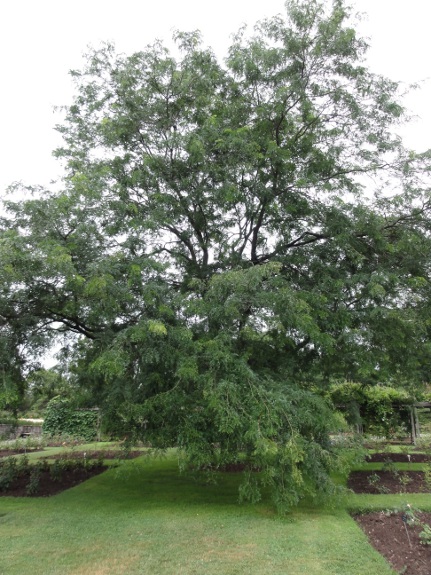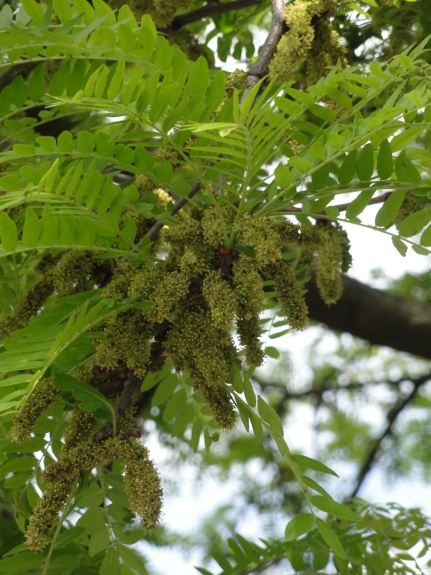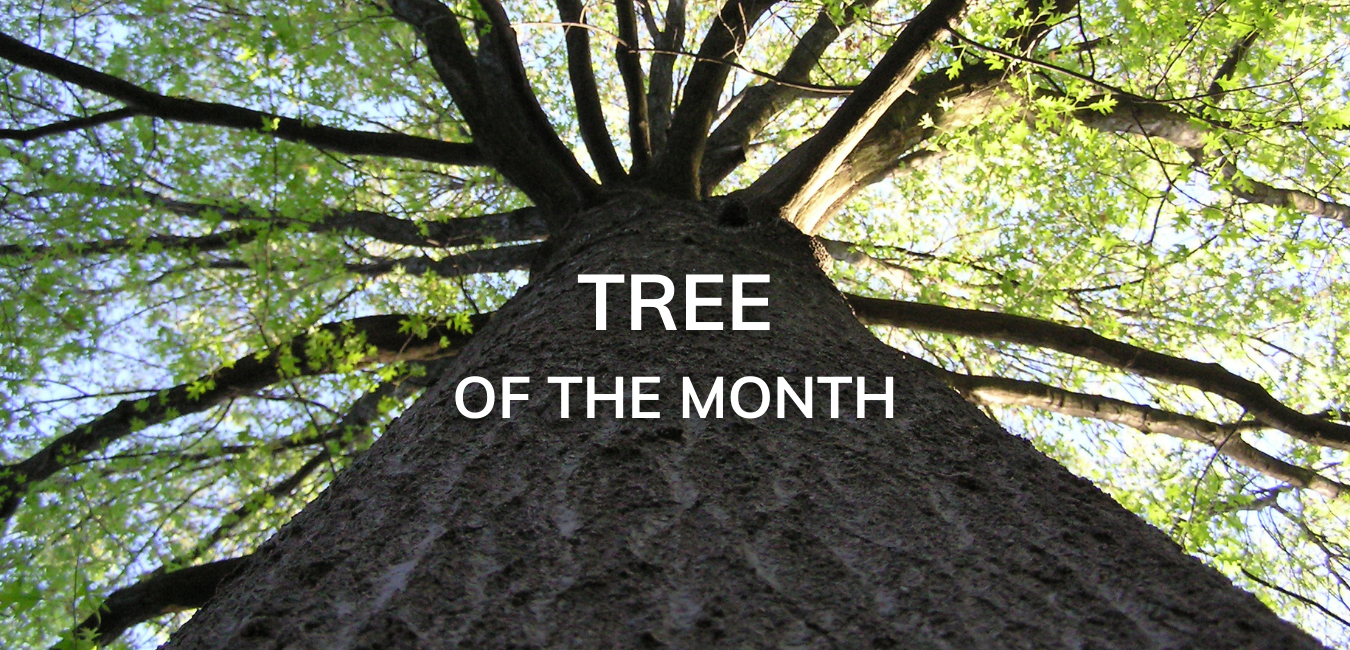
Photo: Jenny Bull 
Photo: Jenny Bull
Honey locust, also known as “Thorny Locust,” is identifiable by its long (up to 30 cm) branched thorns on the trunk and limbs, which are believed to have evolved to help protect the tree from mega-fauna such as mastodons (!) who ate their seed pods in ages long past.
This medium-sized tree grows upwards of 30 metres in height, has a diameter of approx. 90 cm, and live to about 120 years old in urban settings. While rare in Canada, there are some wild honey locusts which occur naturally in Southwestern Ontario. While its wild version is easily recognized by its incredible thorns, there is also a thornless variety that is a popular yard tree for its thin canopy, which lets through a lovely dappled light, as well as its beautiful yellow autumn foliage.
A common garden species, many gardeners enjoy the protective hedges these trees form when pruned. Leaves on a honey locust are alternate, doubly and single pinnately compound – meaning that its leaflets are arranged on either side of the steam, typically in pairs opposite each other. There is no leaflet at the tip. This tree is late to leaf out and flower at the same time as the leaves appear, around May or June. Flowers are greenish white and heavily scented (and fairly inconspicuous), attracting plenty of pollinators.
Its unique, twisted pods give this tree its name due to a substance that tastes like a combination of honey and castor oil! Their seeds and pods provide food for many species, such as white-tailed deer, squirrels, and quail. Young trees have a smooth brownish bark marked with vertical lenticels (horizontal pores), becoming deeply furrowed and often featuring scaly ridges with age.
Interested in planting a honey locust? It’s a very hardy tree! Due to its tolerance to drought, salt, and alkaline soil, the honey locust is also a popular street tree planted by the City of London and many other urban centres. It is also valued as a landscape tree for its open crown and the light shade that it casts. Honey locust grows best on rich, moist roil in sunny sites, but will likely not reach its maximum height in most urban conditions.
Fun Facts
While you don’t want to fall into them, the sharp thorns from honey locusts have been used as nails and pins!
References
https://www.uoguelph.ca/arboretum/thingstosee/trees/honeylocust
https://clctreeservices.com/honey-locust/
http://www.canadiantreetours.org/species-pages/Honey_locust.html
Images Source: http://www.canadiantreetours.org/species-pages/Honey_locust.html


